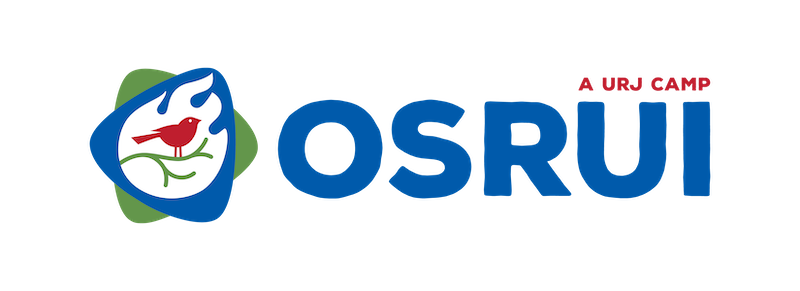By Barb Shimansky, Director of Youth Education at Congregation Sinai in Milwaukee, WI and Kallah Segel
After six years of serving on faculty at another URJ camp, I was quite excited to receive an invitation to be part of the segel (faculty) at OSRUI this summer. I had some familiarity with OSRUI, both as an educator in the region and as a parent of OSRUI chanichim (campers), but during the almost two weeks I have been here, I have become more familiar with some of the minhagim (customs) that make OSRUI particularly unique.
The first thing that stands out is having t’fillot (prayer) twice a day. I personally love prayer services, but I did not develop that love until my teen years. I cannot imagine having been excited for twice daily prayer experiences as a fourth grader – but that is exactly what happens here at OSRUI. I am working with our youngest chanichim in the Kallah eidah (unit), and it amazes me not only how much they enjoy praying, but also how quickly they are becoming comfortable with our daily prayers though this constant repetition. As I work with different tzrifim (cabins) to prepare them to lead t’fillot for their peers, I am impressed by the thought they put into the experience they wish to share with others. Thus far in Kallah, the chanichim have created t’fillot with themes such as love of camp, friendship, teva (nature), and respect and courage. As we teach our chanichim every day about middot (Jewish values), it is wonderful to see them turn around and teach what they have learned to the rest of the eidah.
Another distinct characteristic of OSRUI, as evidenced by some of the language used above, is the extensive use of modern Hebrew. It is simply everywhere! Although we have formal time for Ivrit (Hebrew) each day, Hebrew is truly a living language here at OSRUI. This is not only evident in the names of places around camp, but also in the words spoken between segel, madrichim (counselors), and chanichim. Not being particularly proficient in modern Hebrew myself, I have already learned a great deal that I can incorporate into my own daily speech, as well as into my religious school program when it starts back up this fall.
One aspect of serving on the segel that I have really appreciated here is the significant interaction I have with the madrichim. They are the front line with the chanichim at all times, and the experience of the chanichim truly rests with the quality of the madrichim. When we as segel work together with the madrichim and they know they have our support, they are more successful in their roles. The madrichim here are truly remarkable, and are incredibly committed to assuring that all of the chanichim have an amazing camp experience.
Of course, the highlight of any Jewish camp week is Shabbat! Friday evening is the only time that the entire OSRUI community joins together for a meal in the Chadar Ochel (dining room). The ruach (spirit) is palpable as the everyone fills the space, ready to usher in Shabbat together. Following dinner, we all join together outside for Shabbat shira, a spirited song session. Hearing hundreds of chanichim singing together warms the soul and reminds us that contrary to popular opinion, the future of Judaism is alive and well, and it can be found here at camp.
As I move into my third and final week on the segel this year, I look forward to experiencing more OSRUI mainstays, especially Oconomostock! But most of all, I am excited to further cultivate the relationships I have been developing with chanichim, madrichim, and my fellow segel members – because these are what ultimately make camp the special place that it is.
